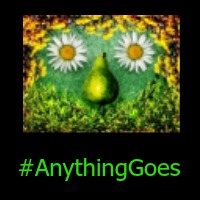Over the last couple of years, I've accidentally read lots of books about birds. This has led to a change in my behaviour as wherever I now go I find myself looking up at birds in the sky and perched in trees. I'm not an expert bird watcher by any means, but I appreciate the birds I've read about - particularly the crow family, corvids, who are the intelligentsia of the bird world.
"What makes you look up?"
 |
| A tawny owl... |
I spend most of my walks looking up, although I do need to occasionally look down so I don't trip. I've also seen kestrels near us, on the hover before diving to ground to strike their prey.
A few weeks ago we were walking with our kids and guide dog puppy Viking around some woods near us. We were walking slowly - toddler pace - as is often the case, and I was pointing interesting things out to my kids to keep them engaged.
As we approached a particular tree I could see a small nest in one of the branches, and when I looked up at this it dawned on me that there was something more interesting sitting on the branch below.
"A sleeping Tawny Owl, expertly camouflaged and sitting perfectly still.."A sleeping Tawny Owl, expertly camouflaged and sitting perfectly still - not something you see every day. After we'd watched it for a few minutes (my kids were underwhelmed to be honest), it opened it's eyes, hunched it's shoulders and launched into a slow glide away from us in search of peace and quiet. It's amazing what you notice around you when you slow down and look up.
 |
| Clouds make me look up... |
Soon I might even be able to hold my own in a cloud conversation with my dad, who's quite an expert in the area from his background as a gliding instructor.
So what is it that you're looking up for?
Looking up stops us from being self absorbed - not just on our mobile device but in our own dreams and plans and projects. It's a way of reorienting, of being inspired, being connected with those around us and the natural world we inhabit.
"It's amazing what you notice around you when you slow down and look up."Jim Rohn asserted that "You are the average of the five people you spend the most time with". I wonder who you spend the most time with, and are they people that encourage you to look up, to dream big and be the best expression of who you're made to be? Are you spending time with people to look up to, people who stretch you, challenge you, inspire you?
 |
| Songs of ascent |
It's thought that pilgrims would sing these psalms together as they shared their journey to Jerusalem, finding shared spiritual inspiration in the natural world on their way.
In one of these Songs of Ascent, Psalm 121 the psalmist writes:
"I look up to the hills - does my help come from there? My help comes from the Lord, who made heaven and earth!"
The most fulfilling journeys are shared ones where we take the time to look up and enjoy the scenery along the way. It might not be birds, or clouds, or a sleeping owl, but maybe this week it's time to look up again, look around, and find some fresh inspiration from the people and places around us.
"The most fulfilling journeys are shared ones where we take the time to look up and enjoy the scenery along the way. "
*************
Thanks for taking the time to read my thoughts on Looking Up! If you've enjoyed it why not share it with your friends on social media? Why not subscribe to The Potting Shed Podcast on iTunes for the audio version and much more (direct RSS feed is here).
I'd love to hear from you, so feel free to comment below or email me at stricklandmusings@gmail.com
If you want to stay up to date please sign up to my mailing list, and do check out my book Life Space on Amazon!









